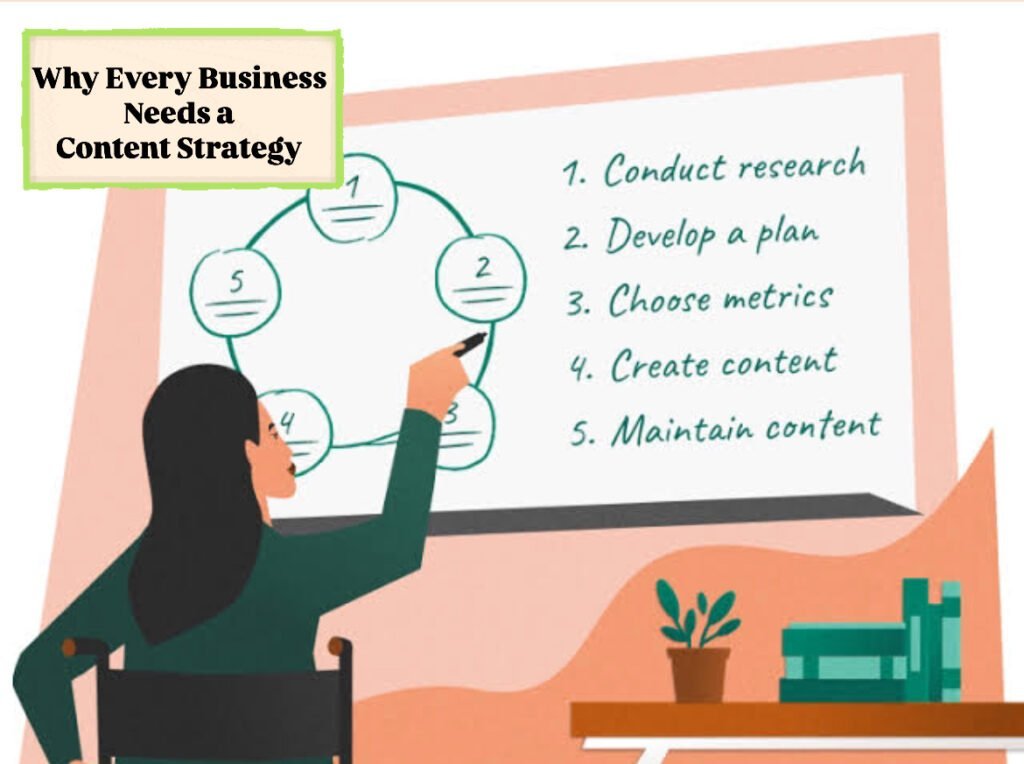
1. Introduction
Why Every Business Needs a Content Strategy
- Hook: Start with a compelling statistic: “Did you know that businesses with a well-documented content strategy are 4x more likely to report success compared to those without?”
- Definition: Explain that a content strategy is a detailed plan that guides the creation, distribution, and management of content to achieve specific business goals, such as brand awareness, lead generation, or customer retention.
- Thesis Statement: Highlight that in today’s digital landscape, where competition for attention is fierce, a robust content strategy is essential for businesses to stand out, engage their audience, and drive meaningful results.
2. The Importance of a Content Strategy
- Aligns Content with Business Goals
- Elaborate on how a content strategy ensures that every piece of content created supports the company’s broader objectives. Whether the goal is to increase website traffic, boost sales, or enhance customer loyalty, a strategic approach ensures that content contributes to these outcomes effectively.
- Ensures Consistency Across Channels
- Discuss the importance of maintaining a consistent brand voice, message, and tone across all platforms. Consistency helps in building a strong, recognizable brand identity, which is crucial for fostering trust and loyalty among customers.
- Maximizes ROI on Content
- A well-planned content strategy helps businesses get the most out of their content efforts by ensuring that resources are used efficiently. By focusing on creating content that resonates with the target audience and drives engagement, businesses can achieve higher returns on their content marketing investments.
3. Benefits of Having a Content Strategy
- Targeted Audience Reach
- Dive deeper into how understanding the target audience allows businesses to create content that addresses their specific needs, challenges, and preferences. This targeted approach increases the likelihood of capturing the audience’s attention and driving them to take action.
- Enhanced SEO Performance
- Explain how a content strategy that includes SEO best practices helps improve search engine rankings. By focusing on keyword optimization, content relevance, and user experience, businesses can increase their visibility in search results and attract more organic traffic.
- Streamlined Content Creation Process
- A content strategy provides a clear roadmap for content creation, from ideation to publication. This not only makes the process more efficient but also helps in avoiding the pitfalls of ad-hoc content creation, such as inconsistency and lack of direction.
4. Consequences of Not Having a Content Strategy
- Inconsistent Messaging and Branding
- Without a strategy, businesses risk sending mixed messages that confuse customers and weaken the brand. Inconsistency can lead to a fragmented brand image, making it difficult for customers to connect with the business.
- Wasted Time and Resources
- Discuss how creating content without a strategy can result in wasted effort. Businesses may spend time and money producing content that doesn’t resonate with their audience or achieve the desired results, leading to missed opportunities and lower ROI.
- Missed Opportunities for Engagement
- Emphasize that without a strategic approach, businesses may fail to engage their audience effectively. In today’s competitive market, where customer attention is scarce, missing these opportunities can significantly impact growth and customer retention.
5. Key Elements of a Successful Content Strategy
- Audience Research and Personas
- Explain how thorough audience research, including the creation of detailed buyer personas, helps businesses understand their customers on a deeper level. This understanding is crucial for creating content that speaks directly to the audience’s needs and interests.
- Clear and Measurable Goals
- Stress the importance of setting SMART (Specific, Measurable, Achievable, Relevant, Time-bound) goals that align with business objectives. These goals provide direction and a benchmark for measuring the success of the content strategy.
- Content Creation and Distribution Plan
- Discuss the significance of having a well-defined content creation plan that outlines the types of content to be produced, the platforms on which they will be published, and the frequency of publication. A distribution plan ensures that the content reaches the right audience at the right time.
6. Steps to Develop a Content Strategy
- Conducting a Content Audit
- Detail the process of conducting a content audit, including how to evaluate existing content for effectiveness and identify gaps. This step helps in understanding what works, what doesn’t, and where there’s room for improvement.
- Setting SMART Objectives
- Provide examples of SMART objectives, such as “Increase blog traffic by 25% within the next 6 months” or “Generate 100 new leads per month through content marketing efforts.” These objectives guide the strategy and provide a clear focus.
- Creating a Content Calendar
- Explain the importance of a content calendar in planning and organizing content production. A well-maintained calendar helps in ensuring consistency, aligning content with key business events or campaigns, and optimizing content delivery for maximum impact.
7. Conclusion
- Recap of Key Points
- Summarize the key benefits of having a content strategy, including alignment with business goals, consistency, and maximizing ROI. Reinforce that in the digital age, a strategic approach to content is not just an option but a necessity.
- Call to Action
- Encourage businesses to start developing their content strategy by taking small steps, such as conducting a content audit or setting specific goals. Emphasize that by doing so, they’ll be well-positioned to build a strong brand, engage their audience, and achieve long-term success.
Don’t Forget to Write:
- Audience-Centric Content: Always create content with your audience in mind. Understanding their needs and preferences is key to producing content that resonates and drives engagement.
- Consistency is Critical: Maintain a consistent voice, tone, and message across all content to build brand recognition and trust.
- Measure and Optimize: Regularly track the performance of your content strategy and be prepared to make adjustments to optimize results. Use analytics tools to monitor metrics such as traffic, engagement, and conversion rates.


